|
Displaying items by tag: San Francisco
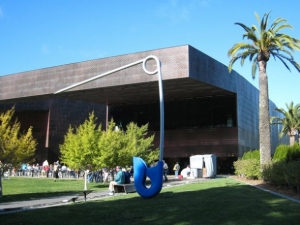
After 15 months without a director, the Fine Arts Museums of San Francisco will appoint Colin B. Bailey, a deputy director at the Frick Collection in New York, the head of the consortium. Bailey, 57, is a renowned specialist in 18th and 19th century French art and has been at the Frick since 2000.
The Fine Arts Museums of San Francisco, which includes the modern-leaning M.H. de Young Memorial Museum and the neoclassical California Palace of the Legion of Honor, was left leader-less after the death of its previous director, John Buchanan, in 2011. The city of San Francisco and a private board of trustees oversee the museums, which collectively are the largest public arts institution in San Francisco and one of the largest art museums in the state of California.
The announcement, which was made by the museum board on Wednesday, March 27, 2013, comes after a considerable period of tumult among the museums; the past year has included tense labor negotiations, firings of senior staff members, and scathing criticism of the board’s president, Diane Wilsey. Wilsey, an art collector, philanthropist, and prominent San Francisco socialite, has been accused of using the museums’ resources for her own benefit and of nepotism.
The museums’ recent troubles have not deterred Bailey’s excitement to join the Fine Arts Museums. His abundance of museum experience includes stints at the National Gallery of Canada, the J. Paul Getty Museum in Los Angeles, the Philadelphia Museum of Art, and the Kimbell Art Museum in Fort Worth, Texas.
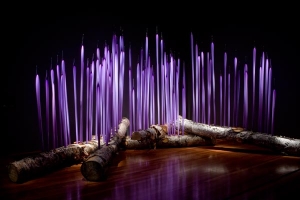
Although the exhibition Chihuly at the Virginia Museum of Fine Arts closed on February 10, 2013, the show’s success left a lasting mark on the Richmond institution. The exhibition, which opened on October 10, 2013, was devoted to the popular American glass artist and sculptor, Dale Chihuly (b. 1941), who is credited with revolutionizing the Studio Glass movement.
Chihuly at the Virginia Museum of Fine Arts brought a record number of visitors during its nearly four-month run. The show welcomed around 160,000 patrons, far exceeding the 115,000 visitors museum officials were expecting. The exhibition also set records for the museum store where Chihuly Studio editioned glass sculptures and lithographs were for sale. The store sold 69 works priced between $4,600-$8,600 and $2,500-$2,800 between November, December, and January.
The show at the Virginia Museum was the third major exhibition in the U.S. to focus on Chihuly’s work in recent years. He was also the subject of record-breaking shows at San Francisco’s de Young Museum (2008) and the Museum of Fine Arts, Boston (2011).
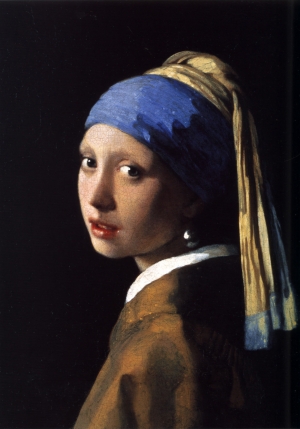
Considered one of Dutch painter Johannes Vermeer’s (1632-1675) masterworks, Girl With a Pearl Earring has spent over a century at the Royal Picture Gallery Mauritshuis in The Hague. Sometimes referred to as the “Dutch Mona Lisa,” the painting, which is not dated, features a wide-eyed young girl whose gaze has been captivating audiences for hundreds of years.
Girl With a Pearl Earring is one of 15 paintings heading to the Frick Collection in New York from the Netherlands. Vermeer, Rembrandt and Hals: Masterpieces of Dutch Painting From the Mauritshuis opens on October 22, 2013 and runs through January 19, 2014. Because of the high level of interest in the enigmatic work, chief curator at the Frick, Colin Bailey, decided to give Girl With a Pearl Earring its own space in the museum’s Oval Room. The rest of the exhibition will be on display in the Frick’s East Gallery.
The Mauritshuis is currently undergoing renovations, which is why part of its collection has been sent out for exhibition. In addition to the Frick, the works will appear in Japan (through January 6, 2013), San Francisco’s de Young Museum (January 26, 2013-June 2, 2013), and Atlanta’s High Museum of Art (June 22, 2013-September 29, 2013). The rest of the Mauritshuis’ collection will remain in the Netherlands and will be exhibited at The Hague’s Gemeentemuseum until the renovations are completed.
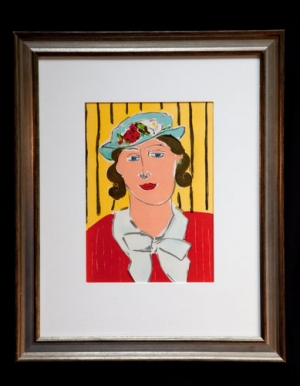
Six years ago wholesale powerhouse, Costco, stopped selling fine art amid allegations that two Picasso drawings sold on their online store were fakes. The company recently decided to give the venture another go adding “Fine Art” as a category in their “Home & Décor” section. Nestled between “Bathroom,” “Bedding,” and “Kitchen & Dining,” the foray into the art market seems to be going well. In the past two weeks or so, 8 out of the 10 have sold including a framed screen print by Andy Warhol for $1,450 and a framed lithograph by Henri Matisse for $1,000.
The works are supplied by Greg Moors, an art dealer based in San Francisco who provided Costco with art when they first launched the department in 2003. Driven by the notion of financially accessible art, Moors dismissed the peculiarity of a discount warehouse store selling fine art. In fact, this practice is not exclusive to Costco. Between 1962 and 1971, Sears sold over 50,000 works by such artists as Picasso, Rembrandt, Chagall, and Whistler as part of the Vincent Price Collection of Fine Art. Customers could even buy works on layaway.
Although he did not supply the store with the questionable Picassos, Moors is very careful about what is available via Costco. Most of the works are unsigned to avoid questions about the signatures’ authenticity. He is also attempting to sell the works of more living artists and is avoiding artists who are known to have a proliferation of fakes circulating in the art market.
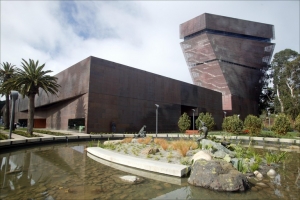
After a confrontation that lasted 10 months, staff members at San Francisco’s Legion of Honor and M.H. de Young museums agreed on a new contract with their employer, the Corporation of Fine Arts Museums (COFAM).
When COFAM and the Services Employees International Union (SEIU) began working to replace the contract that expired in October 2011, accusations of stubbornness, obstructionism, and disregard for the museums’ fiscal stability abounded on both sides.
Electricians, security guards, graphic artists, retail staff, and office administrators voiced their dissatisfaction with COFAM. The dispute peaked last May when Eric Mar, the San Francisco city supervisor who once served as a shop steward of the SEIU, wrote a piece for the San Francisco Examiner supporting the union, complaining about wage freezes, and arguing that the fact that COFAM requires workers to contribute to their own healthcare coverage was unfair. Another peak in the argument was reached this past August when many union members formally approved a strike. On September 7th, protestors gathered outside of the de Young during the museum’s popular event, “Friday Nights at the de Young Museum” catching the media’s attention.
Two weeks after the protest, COFAM stated that they reached a “tentative accord” with the union. The agreement provided 100 members with a 12 to 18 percent pay raise during the three years that their new contract is in effect. That raise is in addition to a three percent pay increase upon signing the new contract and another three percent raise on January 1, 2013.
While employee contribution to health care coverage was a huge point of contention in the dispute, most workers will still be required to make minimal payments. Employees will pay on a sliding scale that starts at $25 per month for employees, $50 for one dependent, and $75 for families.
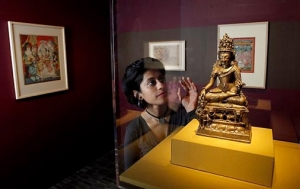
With a collection of 17,000 objects that span 6,000 years, San Francisco's Asian Art Museum is among the most impressive of its kind in the world.
The challenge now before it: avoid becoming a thing of the past.
Last year, the recession left the museum in financial turmoil. Nearly unable to repay millions of dollars in loans, it struck an unprecedented deal in which the city guaranteed the museum's $98 million debt.
Now, with the museum's finances on more stable ground, its leaders are seeking to make a comeback. On the way are exhibits intended to attract a broader audience, a campaign to raise $20 million and other money-making strategies.
"To me, ancient art, no matter when it was made, is never static," said Jay Xu, the museum's director, in a phone interview during a business trip in Taiwan. "It always has life. It's a point for knowledge, discovery."
Nearly 360,000 visitors came to the Asian Art Museum in the Civic Center in fiscal 2008-09 - but that number plummeted to 187,000 in 2010-11.
To help boost attendance, the museum hopes that new collections premiering this fall will appeal to more families and young adults while still luring art aficionados.
A show opening Oct. 21 will center on India's royal courts from the early 18th century to the mid-20th century. Titled "Maharaja," a Sanskrit word meaning "great king," the exhibit will showcase paintings, photographs, outfits, jewelry, furniture and other artifacts from palace life.
A related exhibition that starts Nov. 11 - "Deities, Demons and Dudes with 'Staches" - will offer a contemporary take on the culture. In a series of digitally drawn illustrations, Pixar animator Sanjay Patel employs pop-art hues, crisp geometric forms and cartoon figures to depict royal India.
"When we look at Sanjay's art in the context of the treasures in the 'Maharaja' exhibit, we can understand how he is inspired," Xu said. "In doing so, we're really connecting the art of the past with the art of today."
Making money
Christine Anagnos, executive director of the Association of Art Museum Directors, said the Asian Art Museum is not alone in struggling during the down economy, but that there are ways to help preserve the bottom line.
One thing museums can do is try to attract audiences by showing collections in new ways, she said.
She said Patel's exhibit at the Asian Art Museum is "a fascinating idea because it's an interpretation of art that is hundreds and hundreds ... of years old."
Boosting attendance is just one way the museum is trying to generate more money. In 2009, it started charging an additional $5 to see special exhibits. It also cut the annual number of exhibits by a third and lengthened each show's run time to six months from three months - moves that have saved hundreds of thousands of dollars, said Mark McLoughlin, the museum's chief finance and operating officer.
And this spring, Xu created the position of chief engagement officer, tasked with coordinating the museum's public relations, marketing, business development, and digital and Web presence. In September, the museum unveiled a new logo - an upside-down "A" meant to convey a sense of the unexpected.
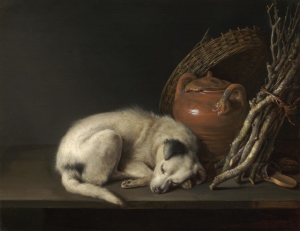
A little white dog with black ears is curled up asleep next to a large clay jar and a bundle of kindling. His carefully rendered fur seems to glow against the muted colors of the background.
Gerrit Dou’s “Sleeping Dog” of 1650 is a tiny painting -- 6.5 by 8.5 inches -- yet it’s also one of the most memorable in a superb exhibition of 17th-century Dutch and Flemish art now on view in San Francisco. Featuring the collection of Rose-Marie and Eijk van Otterloo, it’s the latest of four major shows to open in the city this summer.
The works, which show ordinary life closely observed and often bathed in extraordinary light, features all the key genres and almost all the big names.
There’s a fine Rembrandt portrait of an old woman in a black dress with white collar, a moving Hals portrait of a preacher, a colorful village scene by Brueghel, flower bouquets by Bosschaert and de Heem, a luminous Amsterdam cityscape by van der Heyden and an amusing ice-skating scene by Avercamp. All that’s missing is a Vermeer.
“Dutch and Flemish Masterworks From the Rose-Marie and Eijk van Otterloo Collection” was organized by the Peabody Essex Museum and runs through Oct. 2 at the Legion of Honor, Lincoln Park. Information: +1-415-750-3600; http://www.famsf.org/legion.
‘The Steins Collect’
The curatorial triumph of the summer is “The Steins Collect: Matisse, Picasso, and the Parisian Avant-Garde” at the San Francisco Museum of Modern Art.
Writer and Bay Area native Gertrude Stein and her brothers, Leo and Michael, had remarkable taste and timing. They moved to Paris in the early 1900s and soon began collecting the newest wave of modern art, Matisse and Picasso, as well as the more established Cezanne, Renoir, Bonnard and others.
Their apartments became de facto museums of modernism and salons for the artistic elite of Paris. Gertrude was Picasso’s champion. Leo, Michael and his wife, Sarah, favored Matisse. (And others: Michael and Sarah later commissioned Le Corbusier to design a modernist house for them.)
The sprawling show brings together much of the now scattered Stein collection. It features iconic works like Picasso’s monumental 1905-06 portrait of Gertrude, now in the collection of the Metropolitan Museum in New York, and Matisse’s 1905 “Woman With a Hat,” now part of the San Francisco museum’s collection.
Along with about 40 Picassos, 60 Matisses and works by more than a dozen other artists, the exhibition offers scores of photographs of the Steins, Gertrude’s partner Alice B. Toklas, their apartments and their arty circle, encapsulating a remarkable period.
|
|
|
|
|